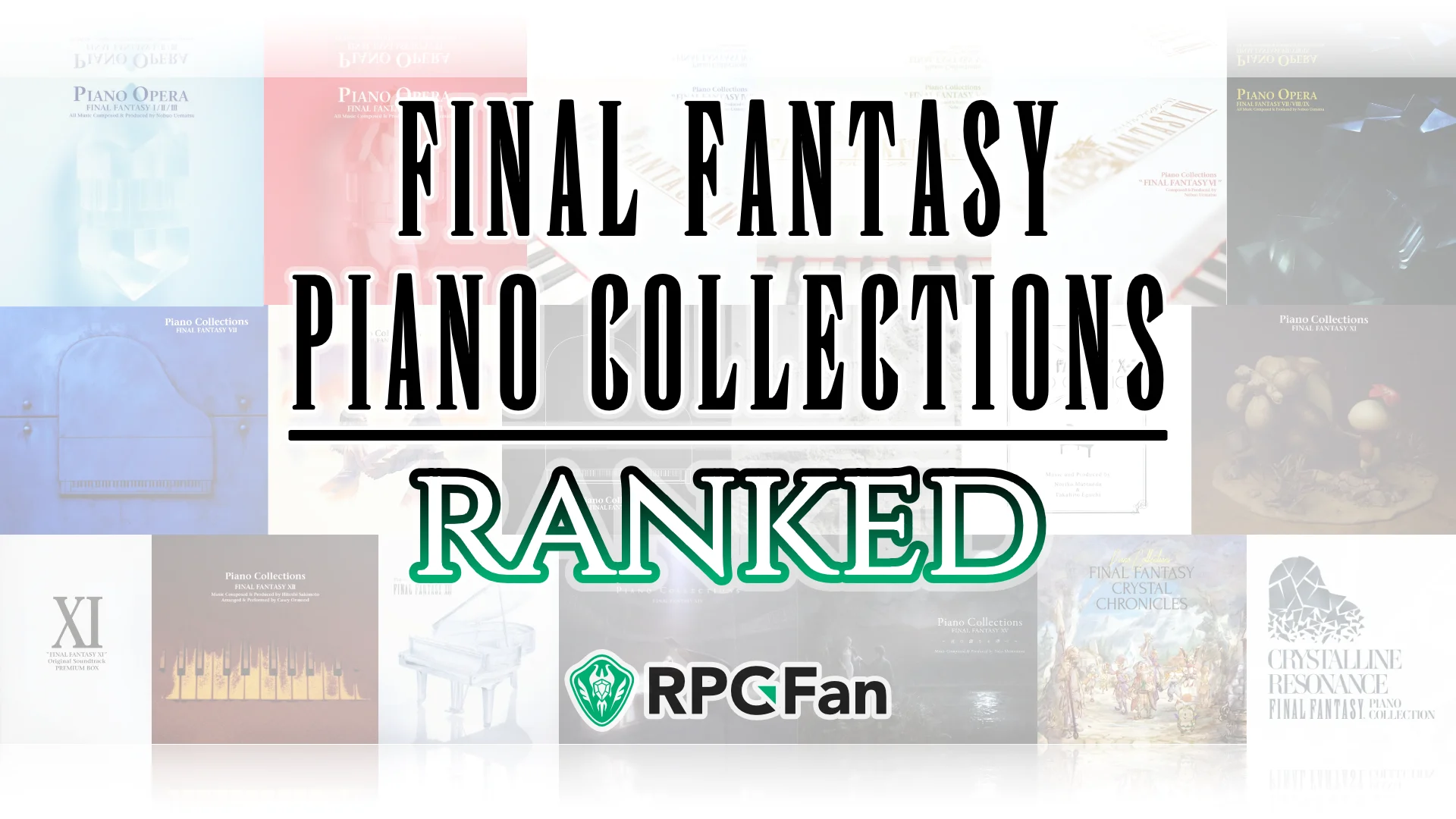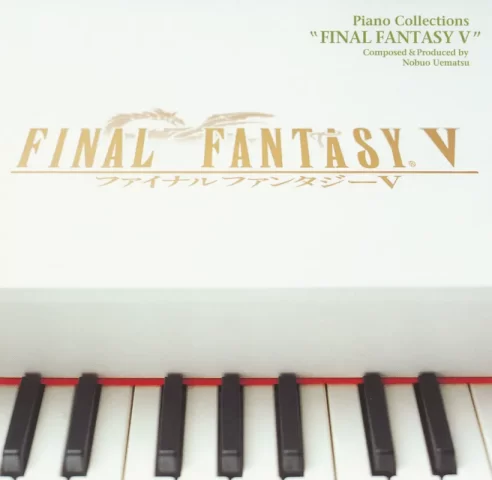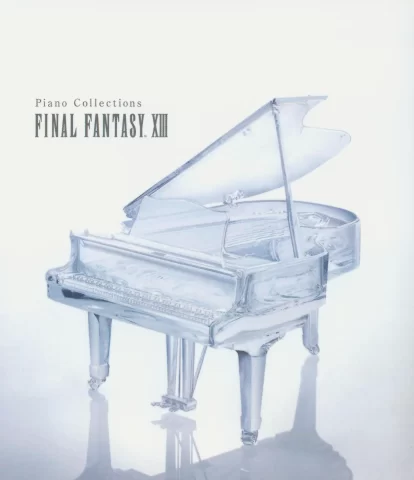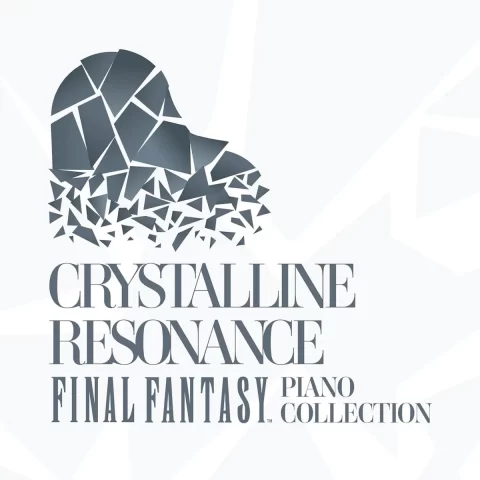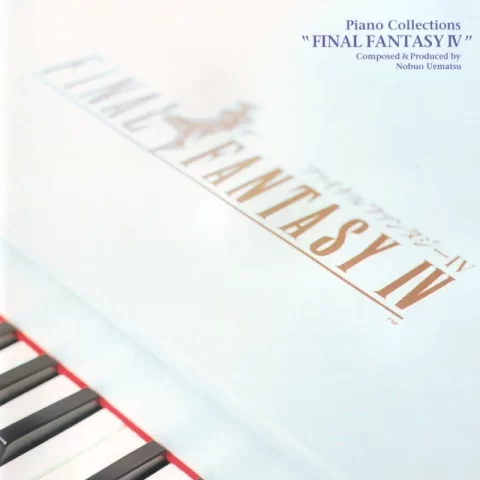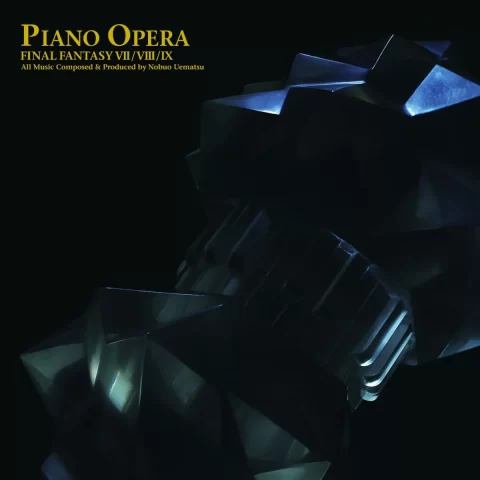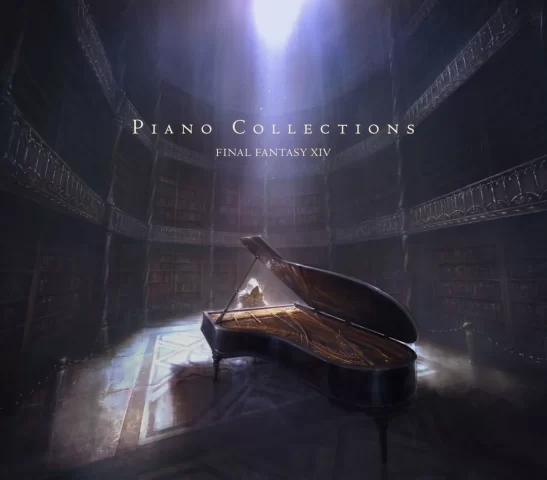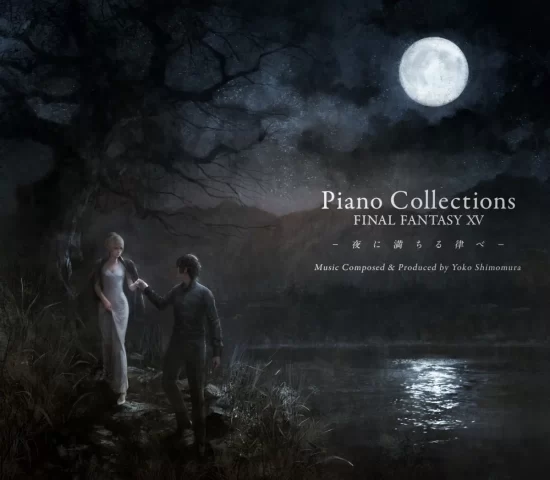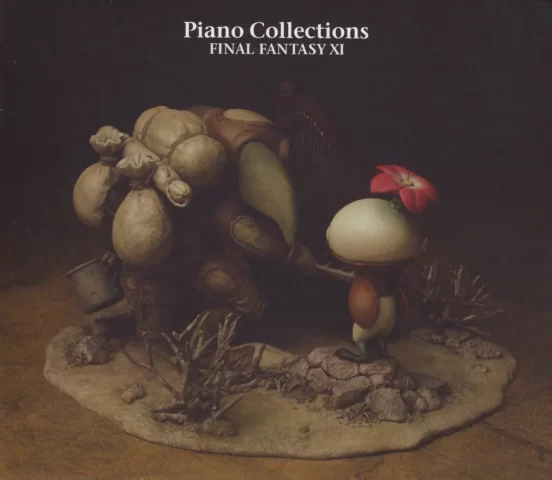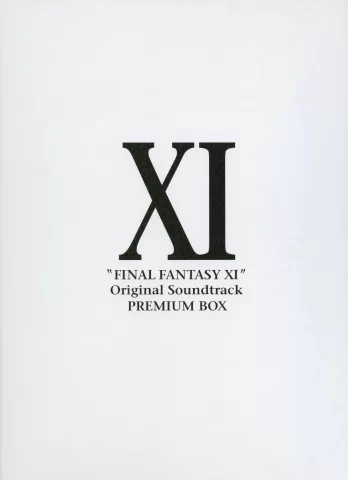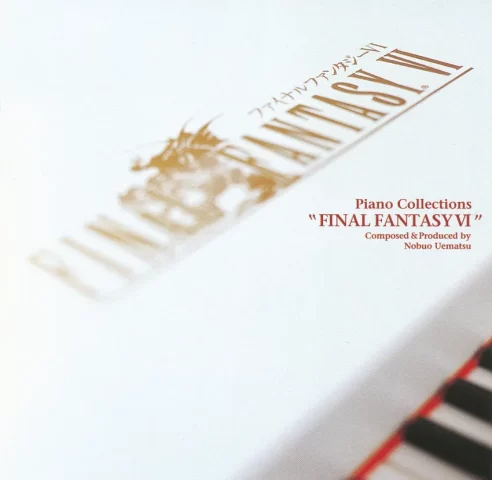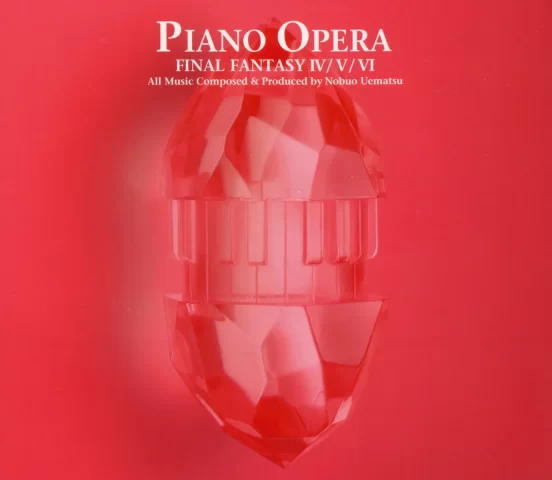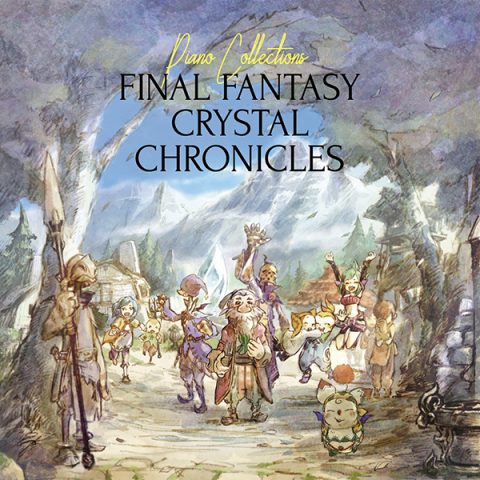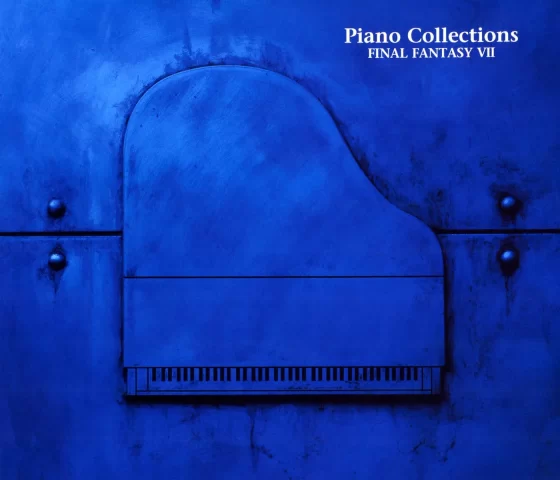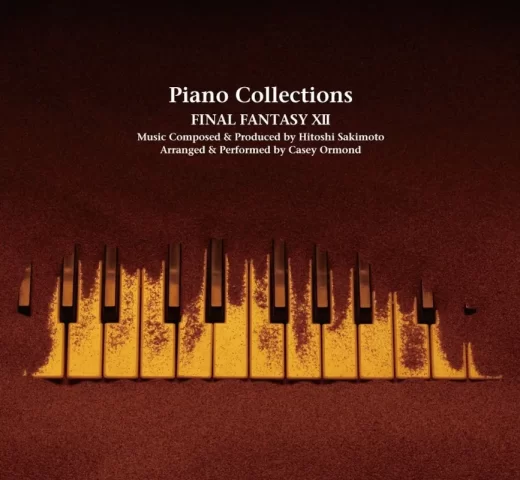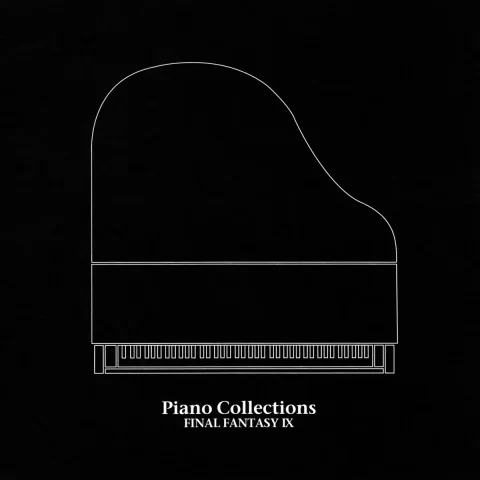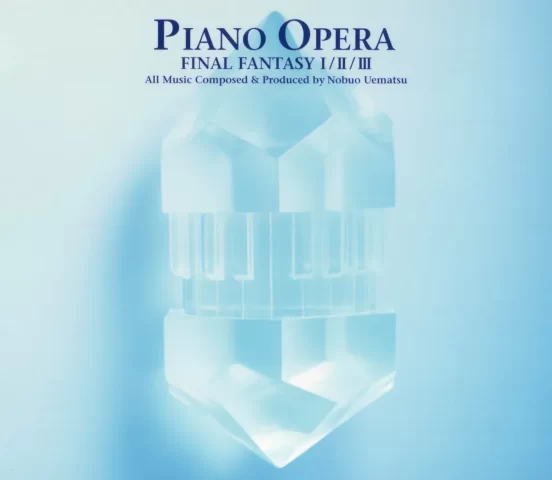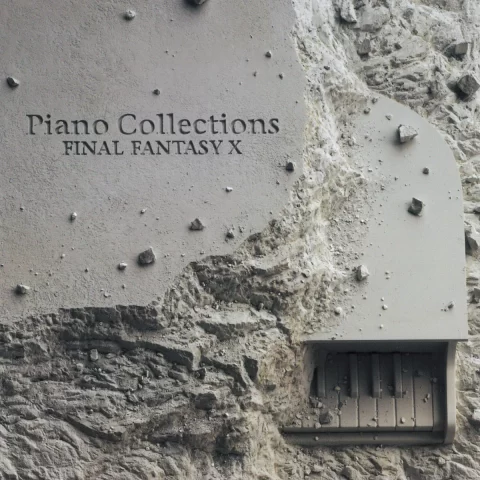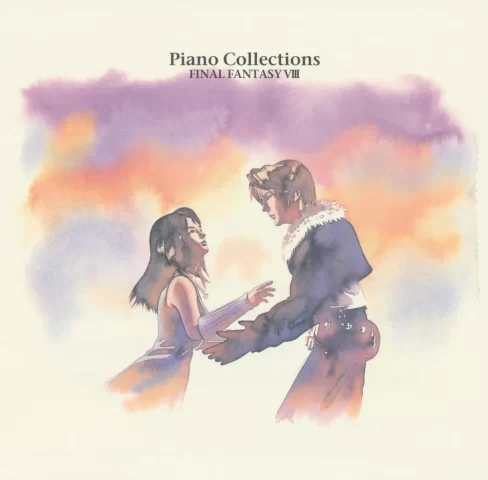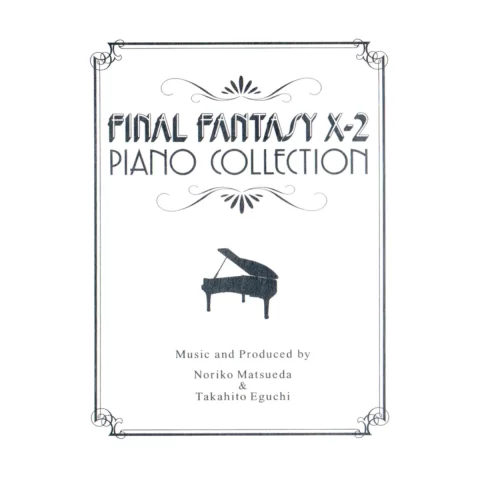If you polled casual and die-hard RPG fans alike for which series’ music they’re most familiar with, I would assume Final Fantasy comes up a lot. Nobuo Uematsu’s name is known and celebrated, and rightfully so!
If someone charged me with the task of ranking all of the Final Fantasy original soundtracks (OSTs), I don’t think I could do it. However! If someone asked me to rank all of the officially published Piano Collections in the series? I would say that I am uniquely qualified to create such a niche list! I have been studying these works specifically for years, collecting not only the albums but the sheet music as well, trying (and failing) to play these fantastic arrangements. I hold that the Final Fantasy Piano Collections are consistently the strongest series of arranged albums in all of VGM. That’s my bias, I’m just putting it out there.
Before we continue, a few rules and caveats. First, this list is exclusively for albums fully dedicated to Final Fantasy and officially published by Square Enix (or Squaresoft, prior to the merger). This excludes great albums like Benyamin Nuss Plays Uematsu and the recent Piano Cover Collection from Square Enix Music Channel, as these albums are only about 50% Final Fantasy. It also excludes some fantastic licensed albums from folks like Kara Comparetto and PurpleSchala.
As you read through the list, note the links to our past reviews. Many of those reviews are mine, and many of them were written decades ago. To that end, I should warn you that my tastes have changed and rankings have certainly shifted from 1998 to the present day. The lowest-ranked entry is praised as “amazing” in my old review, and in the review for my highest-ranked entry, I used the phrase “I dare not call it ‘the best’” and claimed it was not quite as good as two other piano albums (that are now ranked second and third). Well, now I am calling it the best! Or, at least, my personal favorite.
Finally, regarding the ranks. If you’re familiar with tier list videos a la TierMaker, you should have some idea of what we’re talking about here. The highest ranking is “S,” the most wonderful of the wonderful. Theoretically, I could dip down to “D” or “F.” However, the lowest rank among these albums is a solid “C.” This is Final Fantasy music, and the production value of these albums is too good to give them a failing grade. Alongside giving an overall grade to each album, I am awarding sub scores to effective use of the OST source material, the arrangement sophistication, and my overall enjoyment when listening to each album.
Final Fantasy Piano Collections: C-Tier Albums
19. Piano Collections Final Fantasy V (1993)
Source material: B
Town, character, and environment themes aplenty. However, the album appears allergic to battle music, only willing to take on “Battle with Gilgamesh” (“Clash on the Big Bridge”) and with a simplistic arrangement at that. Some of the tracks were fitting for a piano collection, but not very exciting or inspirational (“Waltz Clavier,” “Mambo de Chocobo”).
Sophistication: C
This, along with FFIV Piano, is arguably the most vanilla, transcription-based arrangement in the series, thought it was a step up from non-Square contemporaries (see: Dragon Quest on Piano). For a piano player, most of these arrangements would be considered “intermediate” in difficulty. Compared to FFIV, FFV has some more gimmicky tracks like “Critter Tripper Fritter!”
Enjoyment: C
Though I praised the album in a review twenty-plus years ago, it is certainly the least impressive and least enjoyable album for me to return to. There is still plenty to love, but there has to be a starting line somewhere, and this is it.
Favorite track: “My Home, Sweet Home”
This arrangement has proven the test of time. Simple, yet well-stated, it can move me to tears.
Fun fact:
Alongside FFIV and FFVI, FFV’s first print was shipped as a hardcover book with an imprinted area of the front cover to store the CD. When NTT reprinted the albums, the sheet music was printed separately. Both the reprint sheet music and the first print books are very expensive on the aftermarket, while the reprinted CDs themselves tend to be affordable.
18. Piano Collections Final Fantasy XIII (2010)
Source material: C
There isn’t enough coverage here, honestly. The basics are there. The medley tracks feel ineffective (I need more “Sunleth Waterscape” in track 2). So many great tracks are not here because this album is only ten tracks long. Where can I find “The Hanging Edge,” “Lake Bresha,” “Desperate Struggle,” and the unforgettable Oerba Village melody “Dust to Dust?”
Sophistication: A
Self-arranged by Masashi Hamauzu, the complex and detailed impressionist style still comes out. No matter how disappointed I find myself by this album, I cannot deny that it is technically impressive through and through.
Enjoyment: C
After Hamauzu’s arrangements on Piano Pieces SF2 (Saga Frontier 2) and Final Fantasy X, I thought this would be an instant classic. I was wrong. As I said at its publication, this album was a massive missed opportunity. So much of the game’s score is painfully ignored, and extra care and attention are given to songs I could have happily left behind (the entire track 6 medley, for example).
Favorite track: “Fang’s Theme”
If every track on the album were this good, we’d have a top-tier album on our hands. This arrangement is technically impressive, full of energy, and it enhances the quality of an already killer character theme.
Fun fact:
Noted in the album’s liner notes, “Reminiscence – Sulyya Springs Motif” is so loosely based on its source material that it nearly becomes its own piece of music. Hamauzu did something similar with “Besaid Island” on FFX‘s Piano Collections.
Final Fantasy Piano Collections: B-Tier Albums
17. Crystalline Resonance – Final Fantasy Piano Collection (2025)
Source material: C
Four of the ten tracks are arrangements lifted directly from other albums found on this list, making the album a kind of “best-of,” and even then, I’m not sure it’s the best. The most exciting things about the selections here are the two FFXIV pieces and a new arrangement of “Kiss Me Good-Bye” from FFXII.
Sophistication: A
Arrangements from Keiko, Hamauzu, Nakayama, and Casey Ormond for the FFXII medley. Keiko’s arrangements of the FFXVI tracks are worth celebrating.
Enjoyment: B
Despite my sense of disappointment with the album, it is still a good listen. I can skip the less exciting tracks and get right to the good stuff. And while the slower tracks aren’t amazing, I cannot deny that Nakayama did a good job with his new arrangements of “Aerith’s Theme” and “Eyes On Me.”
Favorite track: “Ascension”
It’s a toss-up between this and the other FFXVI track “Away.” Both arrangements serve as a painful reminder that, as of now, Piano Collections Final Fantasy XVI doesn’t exist.
Fun fact:
Crystalline Resonance is an ongoing piano solo tour featuring pianist Julien Gernay. Gernay recorded this album at Abbey Road Studios in London and has taken the show on the road to over a dozen countries so far.
16. Piano Collections Final Fantasy IV (1992)
Source material: A
As the first piano solo album published by Square, the album rightly includes arrangements of the Prelude, Prologue (FF main theme), and Chocobo themes. Key themes (world map, town, dungeon) are covered, alongside the beautiful character theme for Rydia and a powerful battle medley. While I would have loved to see “Dancing Calcobrena” here, this is still a solid setlist.
Sophistication: C
Alongside FFV, this is the most vanilla and, in the case of some tracks, bland arrangement in the series, only really “intermediate” in difficulty.
Enjoyment: B
Even with the shortcomings in Shiro Satou’s arrangements, the quality performances from Toshiyuki Mori help keep things lively enough. The improv jazz breakdown in “Chocobo-chocobo” and the Satie-esque plodding of “Into the Darkness” are great listens.
Favorite track: “The Battle”
This battle medley covers standard encounter, boss battle, four fiends, and the final battle. The boss battle (“Fight 2”) is wild and fun, while the arrangement for four fiends (“The Dreadful Fight”) takes a surprisingly sharp left turn with a slower tempo.
Fun fact:
While most albums in this series are strictly solo piano, this first album contains a bonus string ensemble arrangement of “Theme of Love.” The performers of this particular arrangement are uncredited, so no one knows who performed this one.
15. Piano Opera Final Fantasy VII/VIII/IX (2014)
Source material: C
The big misstep here by arranger/performer Hiroyuki Nakayama was in his choice to double-dip prior arrangements. This was more acceptable with IV/V/VI, as Nakayama could provide more advanced arrangements. On VII/VII/IX, Nakayama did new arrangements for “Ami,” “Cosmo Canyon,” “You’re Not Alone,” “Rose of May,” and “Melodies of Life.” Five of the twelve tracks already arranged perfectly well for solo piano, now arranged again. I didn’t need that. In Nakayama’s defense, he did bring some serious firepower for VIII, including “Liberi Fatali” and “The Man with the Machine Gun.”
Sophistication: A
There’s a range of technical difficulty across this album. “Those Who Fight Further” offers incredible syncopation and crunchy clusters. “Hunter’s Chance” gives the left hand one intense workout with powerful bass lines.
Enjoyment: B
Part of me felt Hiroyuki Nakayama could have stopped his Piano Opera series at I/II/III, or at IV/V/VI. I suppose it made sense that he continued through the remainder of the Uematsu-only OSTs. While I would have liked a very different setlist, I can’t complain too much about the final product here. It’s a good album.
Favorite track: “Liberi Fatali”
That this track even got an arrangement still blows my mind. The fact that it actually works is an even bigger surprise. Shiro Hamaguchi would never. But Hiroyuki Nakayama did!
Fun fact:
This album marks the end of the Piano Opera trilogy. After this album was released, Square Enix started selling a box set of Piano Opera I~IX, all three CDs in one convenient package!
14. Piano Collections Final Fantasy XIV (2019)
Source material: A
How can one possibly capture the enormous range of Final Fantasy XIV music in one collection of piano arrangements? Even across two discs (100 minutes), it’s nearly impossible to crystallize what makes FFXIV music what it is. My sole complaint here is that arranger/performer Keiko stuck exclusively to Masayoshi Soken tracks. I would have liked to hear some of the 1.0 Uematsu pieces, or music from other Square Enix music team members, somewhere in this collection.
Sophistication: A
Keiko’s arrangements are often impressive. Sometimes, though, I wonder if I’m hearing a lack of dynamic sophistication? I hear loud parts and soft parts, but I rarely notice the happy middle. Crescendos tend to lead to explosions. I can only handle so many explosions. That’s a minor complaint, though. There’s no question that Keiko has a technical mastery over piano arrangement and performance.
Enjoyment: B
My subjective ranking here has a lot to do with my lack of experience playing Final Fantasy XIV. Others may rank it much higher in their personal lists, and I wouldn’t blame them for it. That said, this one truly is tough to rank, as the album serves as a compilation of Keiko’s previous recordings on the Primals / Keiko joint arrange albums. More have come since, probably enough to justify a Piano Collections Final Fantasy XIV Vol. 2.
Favorite track: “Borderless”
I mentioned crescendos and explosions earlier. Here’s a track that I feel provides this kind of build to climax perfectly well.
Fun fact:
There is one bonus track at the end that includes more than solo piano! “Crimson Sunset” features Yoshimi Tsujimoto on bamboo flute alongside Keiko on piano. Definitely an enjoyable listen.
13. Piano Collections Final Fantasy XV: Moonlit Melodies (2017)
Source material: A
While I may have had a song or two I wish was here but isn’t, I don’t think there’s any question that thematically, these are the correct songs for this album. “Somnus,” “Noctis,” “Luna,” “Valse di Fantastica,” “Omnis Lacrima,” and “Apocalypsis Noctis” at the end? The tracklist is everything it needed to be.
Sophistication: B
When Yoko Shimomura gets arranged, Sachiko Miyano and Natsumi Kameoka seem to be the go-to team. While technically complex, I have found the neo-romantic rhapsodic approach they use with Shimomura’s source material to become a bit samey, especially after the two Kingdom Hearts piano albums (Piano Collections Kingdom Hearts; PC KH Field & Battle).
Enjoyment: B
I’m always impressed by these arrangements when I listen. But they haven’t stuck with me, or grown on me, much at all. In 2017, I might have ranked this album as my least favorite. So, I suppose it has made some gains over the past eight years.
Favorite track: “Dreaming of the Dawn -Somnus-”
No matter how many times I try to dig into the other motifs of FFXV, I cannot pull myself away from “Somnus.” Its translation from vocal to piano isn’t really a downgrade, either. Just another soundscape.
Fun fact:
Most of the Final Fantasy piano collections don’t have more to their title. For this album, we got the special suffix “Moonlit Melodies.” I think this name helps differentiate the album, and the project, rather well.
12. Piano Collections Final Fantasy XI (2008)
Source material: B
This was the second (and likely final) FFXI piano album. At time of release, the base game and four expansions were playable (up to Wings of the Goddess). I had hoped to see more battle themes, especially “Shadowlord” and “Ragnarok,” which Kumi Tanioka had been performing at FFXI FanFests. However, this album wasn’t arranged or produced by Tanioka, so we’re stuck with what we get. The choices were largely enjoyable, but so much more was missed. And, seriously, choosing “Besieged” over “Assault?”
Sophistication: B
Kaoru Ishikawa’s arrangements, while challenging for a novice like me to perform, are not particularly complex. Even so, the tiniest of flourishes in tracks like “The Cosmic Wheel” and “Whispers of the Gods” make a big difference.
Enjoyment: A
My enjoyment here has everything to do with my love of the game and the musical source material. I recollect so many cherished experiences when I listen to this album. To that end, I know I am heavily biased.
Favorite track: “Stargazing”
This environment music from Wings of the Goddess is not only my favorite to listen to; it’s also my favorite to (try to) perform.
Fun fact:
There are two non-solo tracks on this album! “Fated Strife -Besieged-” and “Mercenaries’ Delight” are piano duo tracks featuring performers Ayumi Iga and Kasumi Oga.
11. Piano Collections Final Fantasy XI (2007)
Source material: A
This was the first FFXI piano album. Sadly, it is buried as the seventh and final disc in the Final Fantasy XI Original Soundtrack PREMIUM BOX from 2007, which included this album and its sheet music. The tracklist included the base FFXI up through the third expansion, Treasures of Aht Urhgan. I think my only complaint about track selection here is that I wanted more. We have a great blend of music from each expansion, including some unconventional choices like “Promyvion” and “Tu’Lia.” I could have done without “Choc-a-bye Baby.”
Sophistication: B
I think Ishikawa’s arrangements here are slightly better than the standalone 2008 album, and the recording quality is a bit richer as well. Otherwise, the difficulty level and complexity is about the same.
Enjoyment: A
Much like the 2008 release, my enjoyment here has everything to do with my love of the game and the musical source material. I just like this one the slightest bit more, mainly for my favorite track…
Favorite track: “Faded Memories – Promyvion”
Without question, the darkest and most passive “favorite track” on my list. But man, did Ishikawa (and performer Ayumi Iga) absolutely nail the vibes. Utilizing the full span of 88 keys, this is just a stellar arrangement. I can listen to this one on repeat. It proves that complex, highly technical arrangements are not always the key to success.
Fun fact:
As with the 2008 album, there are two non-solo tracks on this album! “Battle Theme #2” and “Vana’diel March #4” are piano duo tracks featuring performers Ayumi Iga and Kasumi Oga.
10. Piano Collections Final Fantasy VI (1994)
Source material: A
It’s hard to argue with this tracklist. It covers many great character themes, the dungeon music “The Mystic Forest” and “Mystery Train,” the 12-bar blues staple “Johnny C. Bad,” and so much more. Arguably, its only big misses are “Searching For Friends” and the epic final battle “Dancing Mad.” Thankfully, Hiroyuki Nakayama rectifies these oversights in his Piano Opera IV/V/VI.
Sophistication: A
FFVI piano comes with a drastic improvement in arrangement quality and technique over Shiro Satou’s beginner-friendly IV and V, exemplified in the complex arpeggiation of “Kids Run Through the City Corner,” the pulsing syncopation of “The Decisive Battle,” and the tonally complex “Stragus.”
Enjoyment: B
I think my biggest challenge here, especially knowing now what we know about the arranger (see the fun fact below), is that I always find myself wanting to listen to the orchestral Grand Finale over this piano solo album.
Favorite track: “Tina”
Despite being one of the simplest pieces on the album, it holds a special place in my heart. Better known now as “Terra’s Theme,” this is the first song from a Final Fantasy Piano Collection that I practiced to the point of competency and memorization. This is a great piece to perform.
Fun fact:
Nowhere on the packaging of the first print or reprint was an arranger ever credited. The identity of the mystery arranger was a hotly debated subject in the VGM community for decades, with contenders including Uematsu himself, Shiro Hamaguchi, Shiro Satou (who did IV and V), Shiro Sagisu (who did FFVI Grand Finale), and the pianist herself Reiko Nomura. In 2015, at the Final Symphony II concert in London, writer Nikolas Broman posed the question to Uematsu, and he confirmed that the arranger was, in fact, Shiro Sagisu. Great news for Evangelion fans!
Final Fantasy Piano Collections: A-Tier Albums
9. Piano Opera Final Fantasy IV/V/VI (2012)
Source material: A
The heavy dose of Shirou Satou’s simple arrangements double-dipped from previous albums (“Main Theme of FFIV,” “My Home, Sweet Home,” “Kefka,” “Theme of Love,” “Troian Beauty,” “Clash on the Big Bridge”) needed a big facelift, and that’s exactly what Hiroyuki Nakayama provided, especially for “Clash” and “Troian Beauty.” There was still so much else I would have wanted, especially from V, but over time I have come to appreciate these choices for arrangement here. The FFVI choices were especially strong.
Sophistication: A
The range of sophisticated arrangement here runs from “B” to “S,” depending on the track. “Dancing Mad” is the craziest one here, while “My Home, Sweet Home” is just a more note-heavy approach to what Satou did on FFV piano.
Enjoyment: A
I have grown to love this album so much since its release. Nakayama truly did us all a favor when he recorded this one.
Favorite track: “Dancing Mad”
Hiroyuki Nakayama didn’t just dare to take on the intense 7/8 rhythmic part at the end of the boss rush against angelic Kefka himself. No, these 11 minutes cover all four sections of this mammoth piece of music. It is a beast. I can’t get enough of it.
Fun fact:
Listen closely to the third part of “Dancing Mad” (the baroque fugue). You will hear the “Kefka” theme in the bass, first in a major key, then in a minor key. This was present in Uematsu’s original version, but it is so nice to hear it fleshed out in this arrangement.
8. Piano Collections Final Fantasy Crystal Chronicles (2021)
Source material: S
What can I say? Kumi Tanioka, the game’s composer, ran the show on this album. She arranged most of it, she performed most of it, and she produced it. Her ten track choices from the OST were all smart choices.
Sophistication: A
These arrangements are so strong. I especially like the piano duo tracks with Yui Morishita, where each artist handled their half of the music.
Enjoyment: A
I was excited when this album was announced in tandem with the HD re-release of Final Fantasy Crystal Chronicles. But I had no idea how excited I should have been. This album has quickly become a personal favorite, outranking many other piano albums and frankly outranking my enjoyment of the OST itself.
Favorite track: “Monster Ronde”
One of the piano duo pieces. The way Tanioka and Morishita keep pace and play against one another is a joy to behold. The pentatonic melody in the A section serves for an easy switch from major to minor, and that tension is a big part of what carries this piece.
Fun fact:
Alongside Piano Collections Final Fantasy XIV, this newer album remains a sore point for enthusiast pianists like myself, as Square Enix has yet to publish the sheet music. Come on, Square Enix! I’m begging you! Even a digital release would be enough!
7. Piano Collections Final Fantasy VII (2003)
Source material: S
The tracklist represents battle themes well. “Those Who Fight Further” (boss theme) is absent, though Hiroyuki Nakayama would cover this later on in the aforementioned Piano Opera Final Fantasy VII/VIII/IX. Here we have “Those Who Fight” (normal battle), “J-E-N-O-V-A,” and “One-Winged Angel.” Other must-haves are here, including the main theme, character themes for Tifa, Aerith, Yuffie (“Descendant of Shinobi”), and Cloud (“Farm Boy”), as well as the only chocobo theme worth arranging for piano in my opinion: “Cinco de Chocobo.” If this album included “You Can Hear the Cry of the Planet,” it would be perfect.
Sophistication: A
Seiji Honda’s arrangements aren’t as technically demanding as Hiroyuki Nakamura’s, but the sophistication and nuance are still there. Again, this is especially the case with the battle themes. If you remember hearing “Those Who Fight” piano version in Final Fantasy VII: Advent Children in the battle between Tifa and Loz in the church, you’ll never forget it.
Enjoyment: A
Every now and then, I find myself exhausted by all things FFVII due to its saturation in gaming culture. When I’m not feeling that way, however, one of my favorite ways to reintroduce myself to Uematsu’s classic score is with this magic piano album.
Favorite track: “J-E-N-O-V-A”
Do you know how many years I’ve worked to master this piece? I never will. I’m just not good enough to keep up with those demanding interval-pairs for each hand to master. Even so, I have this two and a half minutes of recorded glory to return to whenever I want to recapture memories of one of the best battle themes ever written.
Fun fact:
This album was published a bit out of order! After IV, V, and VI, Squaresoft skipped VII and published piano collections for VIII, IX, and X. VII’s piano collection was published between X and X-2, likely as a supplemental album to score of Final Fantasy VII: Advent Children.
6. Piano Collections Final Fantasy XII (2012)
Source material: S
First of all, 13 tracks? Clocking in at just over an hour? This is a lot of work for one piano collection, and I appreciate every track here. I could argue for a handful of others I’d want, but that would be a bit too selfish. These are great choices.
Sophistication: A
Arranger Casey Ormond understands the game’s original composer Hitoshi Sakimoto’s style so well, and Ormond knows how to bring out every bit that counts as he crafts the alchemy of piano solo arrangement. There are some moments that feel like “vanilla transcription,” but it’s rare enough that it doesn’t bother me.
Enjoyment: A
Here’s another one that grew on me over the years. Sure, I was impressed at time of release. But with each subsequent listen, I find more to appreciate with Ormond’s expert arrangements.
Favorite track: “On the Riverbank”
It isn’t the most complex or impressive piece. But, it was one of my favorites on the OST, and Ormond’s beautifully written introduction is exactly the boost the source material needed.
Fun fact:
This album was published after Ormond worked on a Valkyria Chronicles piano album. After publishing this one, there had been rumors that Ormond would do an official Final Fantasy Tactics piano album published by Square Enix. Sadly, that never happened. However, Purpleschala’s self-published two–volume Final Fantasy Tactics Piano Collection includes two arrangements by Ormond: “Ovelia’s Worries” and “Battle on the Bridge.”
5. Piano Collections Final Fantasy IX (2001)
Source material: S
We have 14 tracks here, and they’re all great choices. I also love the track order, putting “Beyond That Door” well before the album’s ending tracks “Final Battle” and “Melodies of Life.” The only thing arguably missing is “Hunter’s Chance,” which Nakayama graciously covered years later on Piano Opera VII/VIII/IX. But seriously, we have “You’re Not Alone!,” “Rose of May,” “The Place I’ll Return to Someday,” “Vamo’ alla flamenco,” and so much more. This tracklist is killer.
Sophistication: A
This is the second of two piano arranged albums by Shiro Hamaguchi (the other being VIII). Hamaguchi took a slightly different approach with IX to match the more traditional tonality of the source material, and it worked quite well. Arguably, however, the star of the show is not the arranger, but the performer, Louis Leerink. Leerink’s dexterity, his deft touch when tickling the ivories, is the hallmark feature of this album. I remain impressed decades later.
Enjoyment: S
It’s almost sickening how good this album is. It just barely falls short of S-tier status overall. And the only reason for that is that, as much as I love this album, there are a few albums I love even more. This album is so enjoyable that, if it were the best album in the series (and the next four albums in the list didn’t exist), I would still argue that the Final Fantasy series of piano albums is the best thing to ever happen to VGM.
Favorite track: “Eternal Harvest”
The opening track sets the tone perfectly. I would argue that this version is leagues better than its OST counterpart. I grant an honorable mention to “Rose of May.”
Fun fact:
The slow, plodding 3/4 of “Bran Bal” can be compared to FFIV’s “Into the Darkness” with notable similarities. Both, of course, could also be compared to Erik Satie’s famous piece “Gymnopédie No.1.”
Final Fantasy Piano Collections: S-Tier Albums
4. Piano Opera Final Fantasy I/II/III (2012)
Source material: S
The first of the Piano Opera albums covers all the bases for the NES trilogy. The “Town” and “Battle” medleys give us plenty of nostalgic moments, and the special attention to FFIII’s score is vital. Here we find “The Boundless Ocean,” “Crystal Cave,” and “Eternal Wind.” And I can’t complain about seeing FFII’s “Tower of the Magi” either! Excellent choices.
Sophistication: S
Technically more demanding than FFVIII and much less demanding than, say, FFXIV, the sophistication here comes with Nakayama expertly translating chiptunes into piano solo music with the perfect touch of nuance. This is especially noticeable in “Tower of the Magi” and “Crystal Cave.”
Enjoyment: S
It’s an “S” for the FFIII tracks alone. The others are just a bonus.
Favorite track: “Crystal Cave”
I could make a case for any of the FFIII tracks, but this arrangement is one of Nakayama’s crowning achievements. I’ll never tire of hearing those arpeggiated runs in harmonic thirds, and it’s wonderful hearing one of Uematsu’s earliest examples of dabbling in Phrygian modal scales.
Fun fact:
While it’s likely just grandiosity and hubris on my part, I like to imagine that this album exists because I loudly whined for its creation over the Internet for a solid decade. Obviously, having a complete piano series would require Uematsu and/or Square Enix revisiting the first three games at some point, and it finally happened in 2012. So, even if I can’t take any credit, I am sure glad it happened!
3. Piano Collections Final Fantasy X (2002)
Source material: S
I could have done without Tidus’ Theme, crucial as it may be to the album’s focus on character themes. Other than that, these are perfect selections. Everything I could have wanted is here.
Sophistication: S
Masashi Hamauzu’s self-arrangements are typically incredible. However, here he is carrying the weight of Uematsu’s and Nakano’s contributions as well. I think Hamauzu arranging Nakano on “Guadosalam” is one of the most beautiful things I’ve ever heard. Then you have Hamauzu going nuts with his own work on tracks like “Assault” and “Decisive Battle.” Madness!
Enjoyment: S
What makes the album so good is its consistency. Much like Hamauzu’s Piano Pieces SF2, the high quality from one moment to the next is what keeps me listening. And that’s why…
Favorite track:
I … I can’t do it. It’s like a five-way tie between “Besaid Island,” “Guadosalam,” “Assault,” “Path of Repentance,” and “Decisive Battle.” Please don’t make me choose!!
Fun fact:
While Hamauzu arranged this album, the incredible performer on this album is Aki Kuroda. Hamauzu and Kuroda would team up for PC FFXIII years later. You can see why my expectations were so high.
2. Piano Collections Final Fantasy VIII (2000)
Source material: S
While some may lament the complete lack of battle themes, I am fine with this. On this album we get stellar arrangements of the world map (“Blue Fields”), beautiful town themes, a home run of a final dungeon arrangement (“The Castle”), and two very fun, upbeat choices (Triple Triad’s “Shuffle or Boogie” and the ragtime masterpiece “Slide Show Part2”).
Sophistication: S
They might not be the most complicated or impressive arrangements, but Shiro Hamaguchi essentially stripped his orchestral arrangements from Fithos Lusec Wecos Vinosec down to the solo piano, and he really made it work. There were some interesting artistic choices in the arrangements for “SUCCESSION OF WITCHES,” “Silence and Motion,” and the grandiose “Ending Theme.”
Enjoyment: S(+)
I could listen to this album on repeat for days. I think I actually did that in college. As I prepare this tier list, I find myself struggling to tear myself away from this album and listen to other albums. It’s just that good. This is an absolute treasure.
Favorite track:
I have to call a tie here. “Find Your Way” is beautiful and brooding. “The Castle” is a technical masterpiece incorporating baroque, classical, romantic, and impressionist elements.
Fun fact:
The first print of this album comes with a poster of the watercolor front cover, blown up to 18” x 24”, on a thick stock paper. I personally had this poster framed in 2000, and it hangs on my wall to this day.
1. Final Fantasy X-2 Piano Collection (2004)
Source material: S
Not only do we get some of the most powerful tracks from the base game, but Square Enix waited until after FFX-2 International + Last Mission was released to publish this piano album, so we got two incredible tracks from that bonus content here: “Wind Crest ~The Three Trails~” and “Creature Create.” These two tracks round out the set perfectly.
Sophistication: S(+)
The phrase “too many cooks spoil the soup” does not apply here. There are five arrangers and four performers across this disc, and given the varied genres of the source material, I think the added talent was necessary. One notable performer is Shinko Ogata, who performed the entirety of FFVIII piano. One of her three tracks here is Shuyin’s big solo number within the game, “From ‘Nightmare in the Cave.’” She destroys this piece. Masahiro Sayama’s heavy jazz work is incredible (and good luck trying to recreate it on your own, even with the sheet music!); Hiroko Kobuku’s improvised ballads are beautiful; Febian Reza Pane’s take on the final battle track “Demise” will knock you on your butt.
Enjoyment: S(+)
When I started working on this list, I thought I would crown FFVIII the #1 spot. But, as I listened and re-evaluated, I had to admit that X-2 simply has the best piano collection. When you compare the source material (OST) to this piano collection, the transformation is breathtaking. When you let this album carry you away, it can be one of the most relaxing and invigorating listening experiences in all of VGM. It’s just. That. Good.
Favorite track:
I’ll pick one slow one and one fast one. “Wind Crest ~The Three Trails~” carries personal value for me; I even dedicated the piece to my daughter in an episode of Rhythm Encounter. “Demise” is too good for words. It’s too good for 1000 Words.
Fun fact:
Final Fantasy X-2 was Noriko Matsueda’s final project in the world of game music, and this arranged album essentially marks her departure from VGM. Her long-time writing and romantic partner on FFX-2, Takahito Eguchi, has continued to do freelance work in VGM and anime score. The two married in 2009. I hope they know how pivotal their final joint project has become in the eyes (and ears) of so many fans.
Conclusion
It’s been quite the journey crafting this article. When I first got started on it, Crystalline Resonance hadn’t even been announced. Listening to each album closely to write this article was a journey well worth taking, with emotional highs matching my most cherished experiences playing the respective games in the Final Fantasy series. Truly, the intersection of Final Fantasy and piano arrangement is one for the ages.
Maybe someday, eventually, I will get to update this ranked list. Will a formal Final Fantasy XVI piano album come to pass? Will the latest FF remaster, Final Fantasy Tactics: The Ivalice Chronicles, lead to its own piano collection? Time will tell.

